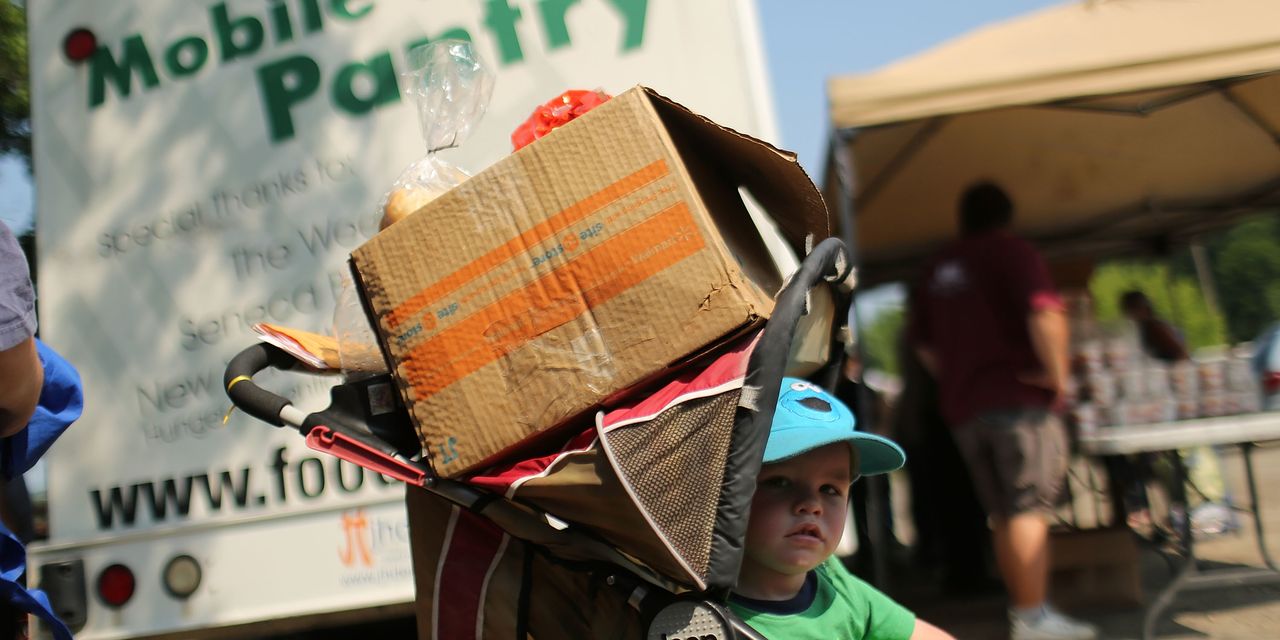U.S. politicians made the choice to lift millions of children and families out of poverty in the midst of the coronavirus pandemic. But the pandemic-era programs expired in late 2021, and the Census Bureau reported Tuesday that millions of children and families were plunged back into poverty the following year.
The U.S. poverty rate according to the Supplemental Poverty Measure (SPM) was 12.4% in 2022, a rise of 4.6 percentage points from 2021. The poverty rate for children more than doubled year over year, from 5.2% to 12.4% — a record increase.
Inflation was a factor, but Census Bureau officials said the spike could largely be attributed to the expiration of pandemic programs: There were no stimulus payments last year, and the enhanced child tax credits expired in 2021.
Experts, many of whom predicted this would happen, agreed.
“This is a direct consequence of the failure to extend the expanded child tax credit and pass the Build Back Better legislation,” Nikhil Goyal, a former senior adviser to Sen. Bernie Sanders on education and children, and author of a new book titled “Live to See the Day: Coming of Age in American Poverty,” said Tuesday.
In a recent interview, Goyal also told MarketWatch, “I think a lot of Americans don’t understand or don’t know how much inequality exists in this country.”
He said it was clear that the enhanced federal child tax credit, which was included in the American Rescue Plan in response to the pandemic, helped lift millions of children and families out of poverty. The tax credit gave eligible households with children $250 to $300 a month for several months in 2021, helping lift 5.3 million people, including 2.9 million children, out of poverty, according to Census research. In addition, eligible families received three rounds of stimulus payments in 2020 and 2021.
The Census Bureau releases two poverty measures annually. The official poverty measure compares pretax money income to a poverty threshold adjusted by family size, number of children and ages. The SPM includes income and payroll taxes, tax credits and other benefits like Supplemental Nutritional Assistance Program (SNAP) and housing subsidies, minus expenses such as medical expenditures, child-support payments and child-care costs.
The official poverty rate in 2022 was 11.5%, translating to 37.9 million people in poverty.
Other notable figures from the 2022 report:
- The official poverty rate for Black individuals was 17.1%, the lowest on record. That rate was still higher than all other groups, though. The rate for Hispanic individuals was 16.9%, followed by 8.6% each for Asian and white individuals.
- SPM rates by race and ethnicity were 19.3% for Hispanic people, 17.2% for Black people, 11.6% for Asian people and 9.1% for white people.
- The official poverty rate for those ages 18 and under was 15%, compared with 10.6% for those ages 18 to 64 and 10.2% for those 65 and older.
- SPM rates by age were 14.1% for the oldest group, 12.4% for the youngest group and 11.9% for those ages 18 to 64.
- Refundable tax credits kept 6.4 million people out of poverty, 3.2 million less than the year before.
Other organizations that were worried about the consequences of the end of the pandemic programs weighed in Tuesday.
Economists from the left-leaning Economic Policy Institute released a statement that pointed out the effects of U.S. policy choices: “If policymakers were willing to maintain the pandemic-era CTC expansions, a much smaller share of children would be living in poverty.”
“Millions of kids across the U.S. are living in real poverty — going without sufficient food, shelter, and access to opportunities — not because we lack the resources to fix this injustice, but because we choose not to,” Oxfam America added in a statement.
Goyal, a sociologist whose book follows three Puerto Rican children in the poorest neighborhood in Philadelphia, said the American Rescue Plan “was one of the largest expansions of social safety net for children and families in history of this country.” He said Democrats were working to make that expansion permanent in the Build Back Better bill, or at least extend it by a decade — or even a year. None of it happened.
From the archives (January 2022): Manchin says ‘no negotiation’ happening on Build Back Better
“As long as Republicans control the House, the fight is really at the state level to help adopt a version of what we did at the federal level,” he added. More than a dozen states have state-level child tax credits in addition to the regular federal credits.
And he predicts more tough times are ahead, with other pandemic programs such as emergency rental assistance winding down and inflation, though slowing, continuing to be a factor.
“We have enough resources to provide everyone with a good life,” Goyal said. “The only thing missing is political will to make that happen.”
Read the full article here





